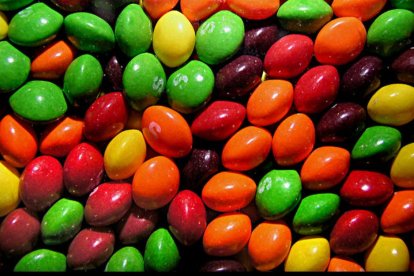California and New York Democrats take on Skittles: propose to ban 5 toxic additives in foods and candies
Brands could face penalties of up to $5,000 for a first offense.

(Wikimedia Commons-
Democratic lawmakers in California and New York seek to ban five food additives commonly used in thousands of sweet products sold nationwide.
Legislative proposals from both states would curb the manufacture and sale of those foods and beverages that use: Red Dye No. 3, titanium dioxide, potassium bromate, brominated vegetable oil and propylparaben.
State lawmakers teamed up with non-profit organizations Consumer Reports and the Environmental Working Group to determine which additives widely used in the United States have been linked to neurodevelopmental problems, hormone dysfunction and cancer.
"These five were truly the worst of the worst," said Environmental Working Group senior vice president of government affairs Scott Faber.
The project would force popular brands such as Skittles, Sour Patch Kids, Campbell Soup, and Pez, among others, to change their product recipes to meet the new standards. Failure to do so could result in penalties of up to $5,000 for the first offense and $10,000 for repeat offenses.
NCA opposes the proposals
The National Confectioners Association (NCA) issued a statement rejecting the proposals, stating that no evidence exists to support a ban on additives.
"The ingredients that would be banned under this proposal have all been approved by the U.S. Food and Drug Administration (FDA). Food safety is the number one priority for U.S. confectionery companies, and we do not use any ingredients in our products that do not comply with the FDA's strictest safety standards," the association said.
FDA responds
An FDA official said the food additives were evaluated based on several factors, including the "amount expected to be consumed," and stressed that the studies supported the safety of the ingredients.
The use of additives
The ingredients lawmakers seek to ban are often used in thousands of foods produced in the country to preserve food or improve product texture, color, and flavor. Red Dye No. 3 alone is used in more than 2,900 foods such as sweets, cakes, sugary drinks and even medicines.
RECOMMENDATION





















